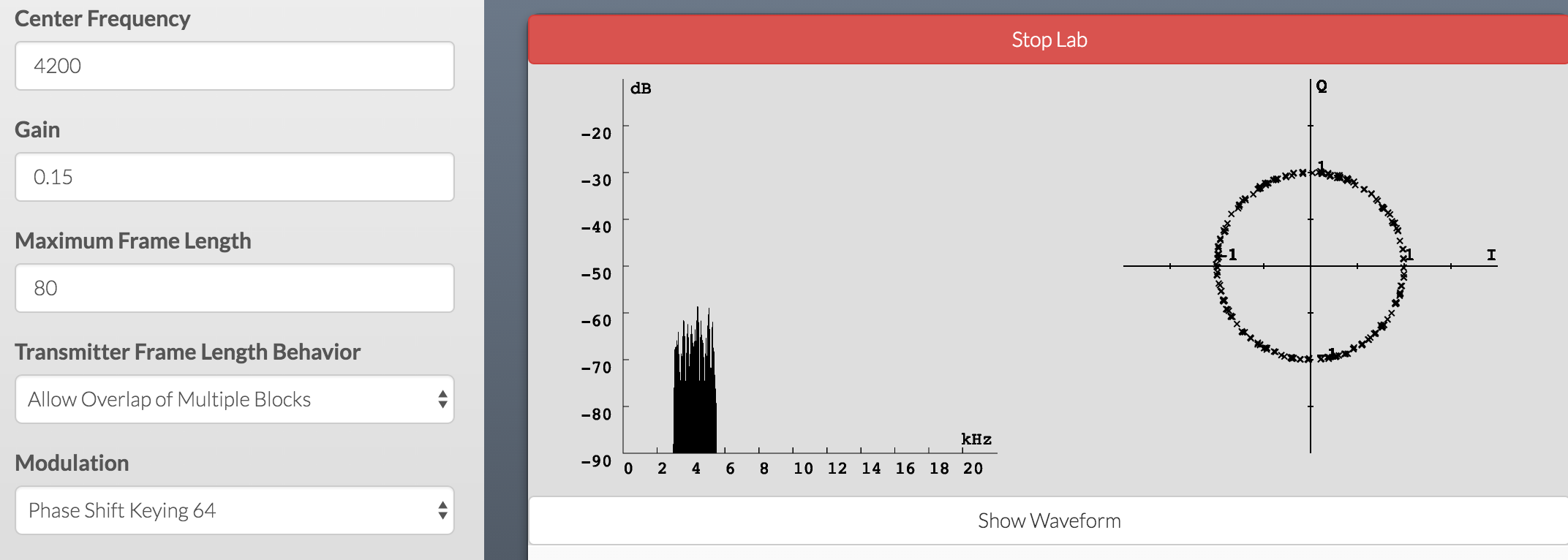on
Quiet Profile Lab — Build a Modem, Learn Some DSP
Quiet.js and libquiet are capable of transmission via audible tones, ultrasonic tones, and through an audio cable at wide spectrum. Quiet provides a JSON file which provides parameters for each of these modes. A single set of parameters, a profile, sets the center frequency of the modem, the modulation, error correction modes used, and more. Creating a new profile in a way that’s robust to hardware limitations and yet provides good throughput can be difficult, which is why I’m now pleased to announce the Quiet Profile Lab, a fully interactive workbench for creating and testing new profiles.

The Quiet Profile Lab makes it easy to test out new ideas for profiles. It offers spectrum and constellation diagrams in real time, as well as statistics about throughput, performance, and error rate. This makes it suitable not only for creating new profiles but also learning about modem design. If you’re working from a laptop, you have the perfect testbench – the laptop’s mic will likely pick up the audio generated by its own speakers.
If you are unfamiliar with the techniques used by modems, I welcome you to try out the Lab and experiment with different settings. Because it’s interactive, the Lab is a great way to examine the behavior of various modulation modes. While Wikipedia offers good explanations for many DSP terms, it can be beneficial to see them working in a live example. Even if many of the terms in the Lab are unfamiliar, you may be able to figure out what they do, just by experimenting with them.
If you’re not sure where to start, here are some ideas. Try changing the center frequency. Do you notice changes in how the modem sounds? Reduce the gain and see how quiet you can get the modem while still receiving frames. Increase the interpolation factor (samples per symbol) to narrow the part of the frequency spectrum that your modem uses. Can you find a high frequency, narrow spectrum setting that transfers data but which you can’t hear?
If you have the cable on hand, I highly recommend creating a loopback setup to test on, as well. Passing the audio over a cable greatly reduces noise and will allow you to pass a more delicate, higher throughput signal and will preserve the constellation more than using speakers/mic will. The Lab includes some presets to get you started in cable mode.
Once you’re done, have a look at some of the standards used by the devices you own, like 4g LTE or 802.11a. The Lab provides a good way to get familiar with some of the techniques used in common radios, which are remarkably similar despite being carried by electromagnetic waves rather than by sound.
If you find a profile that you’d like to start using with Quiet.js, the Lab provides you with the properly formatted JSON text for the profile you’ve created. It’s as simple as copying the text and pasting it into quiet-profiles.json under a new key.
If you’ve always wanted to learn about DSP but have not had the chance, I hope you’ll spend some time in the Lab. I think you’ll really like it.